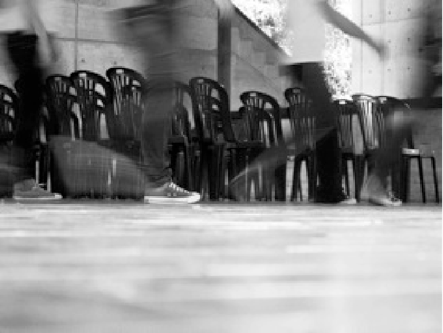INTERACTION INTERSECTION
PROPOSITION
Interaction : intersection as developed from a project first made in NY in November 2001. It was featured in the Architectural Associations magazine AA Files in November 2001.
WALK DON’T WALK 2001
I made a walk in NY that was determined by the walk dont walk street signs. I left the decision of where I walked entirey in the hands of the instructions of the signs.
WORK FOR NEW YORK PEDESTRIAN INTERSECTIONS
A work that uses the streets of New York as the site, the structure and the score.
The particularity of the New York Street and sidewalk system means that on many junctions if someone was to walk very slowly they could keep moving continuously in a loop without needing to stop.
The crossing guidelines, the grid system, the traffic flow and the commands to walk and don’t
walk, give not only a structure but also the instructions and timings.
Participant volunteers will be drawn locally and include dance classes and people without any dance or performance training. Through a series of workshops each of the players will develop a simple routine that will form part of a collective ensemble work. The final work, a continuous circus – circuit around one intersection, will be performed either once, or a number of times at a single place or at a number of intersections. It’s a piece that can be scaled up from five participants to fifty.
Intersection : interaction forms a live loop of repetitive actions. However there will be deviations and development of the actions as they repeat, some becoming more complex. Starting with one performer and increasing at each corner until the full ensemble are walking, moving, bending, singing, speaking, shouting etc
Identify a number of possible locations, to document each one, to time the crossing, measure the distances and locate, street furniture, - public telephones shop signs etc. And most importantly access – entrances and exits.
This work follows on from my interest in measurement, movement, and the voice. It is a work that combines many elements of drawing, not only in the physical act of drawing on paper, but also in using the existing street drawings, lines and the complete theatre of signs and instructions already on the street.
The intersection. The Interaction (possible route)
Act one
First one performer walks the crossing, slowly balancing a book on their head. The walk is timed for the exact duration of the walk light indicator to stay on WALK. This enables them to continue to walk on to the next crossing. This way the performers circle continuously without stopping. After two crossing, (half way) another performer enters- another action, gradually the circus grows with different actions, someone walking backwards. Someone stops/starts, a couple argue, each action repetitive. Gradually the group gets bigger and gradually they exit and leave the original book person alone.
Act two
This time the performers are broken into two groups. One group circles clockwise the other anti-clock wise. Perhaps more interaction as dancers swap partners, movements are reversed.
t’s a work that would need to be timed for a particular location but once a set of rules and actions have been designed and with the confidence of the performers it could be re-timed for other locations. Although it will be carefully planned, measured and timed, it will not be so fixed or structured that a ‘wrong’ move could disrupt the work. There will be an inbuilt level of tolerance and improvisation.
As well as physical actions there will be vocal and musical actions that would be explored through the London and New York workshops to accumulate variations in which to make the selection of actions. However it is apiece not only designed for the specific conditions of the street it is also designed for particular performers and reliant on what they will bring.
Technical requirements
A large space inside or outside to workshop and rehearse. It would need the commitment of the time from the performers, so it might be that there are regular workshops for an intensive two weeks or spread over a month. This will depend on availability of the performers. At a certain time rehearsal will need to take place on the actual location.
Below, I have included images from workshops in Caracas in April 2O11. We met twice a week for a month. I worked towards a number of projects that involved the performers walking while singing. There was for a piece called Hola, a pop up piece which was performed three times in the main shopping area called Sabana Grande.









